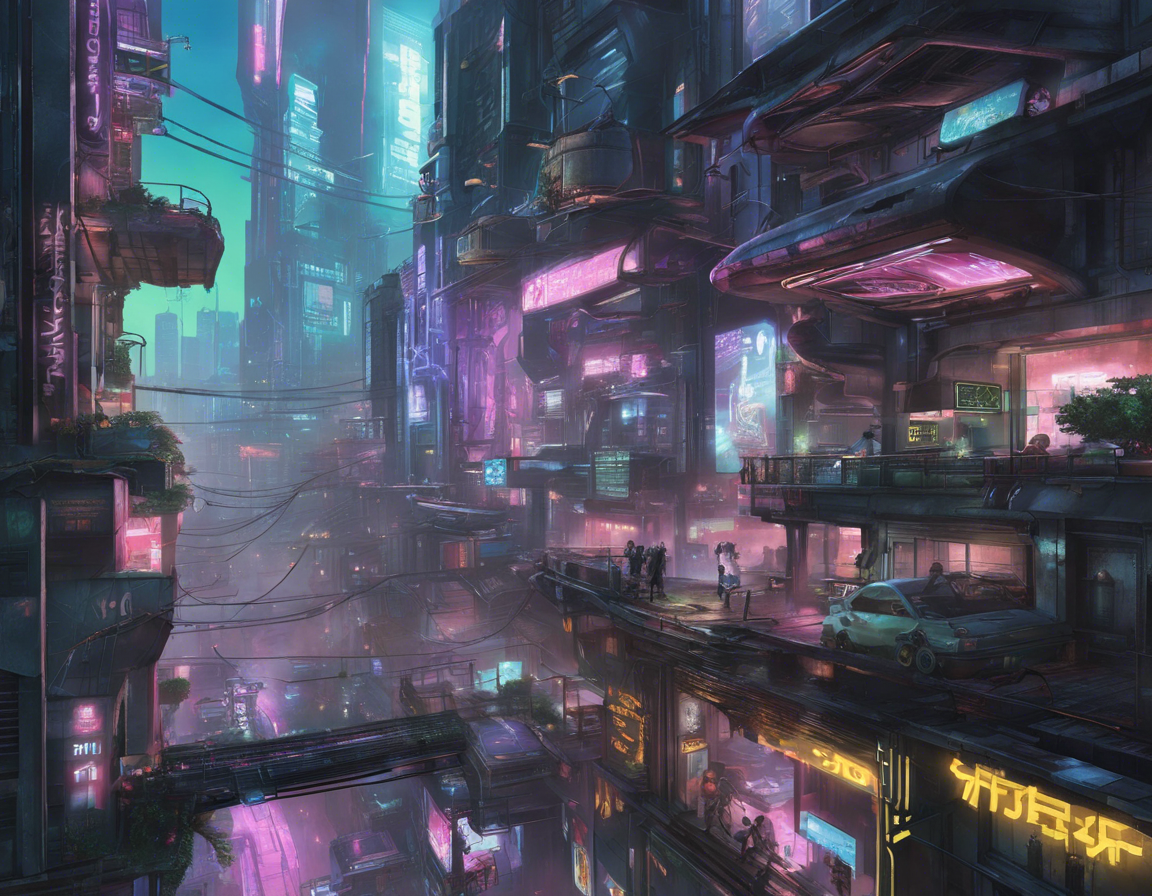“Cyberpunk City: The Future of Urban Landscapes in Gaming and Beyond”

In the realm of science fiction, few concepts have captured the imagination as vividly as the cyberpunk city. A fusion of high-tech gadgetry and dystopian urban decay, these futuristic metropolises have become a staple of both literature and video games. Recent developments in gaming, particularly with the announcement of Project Orion, the sequel to Cyberpunk 2077, have brought the cyberpunk city back into the spotlight. This article delves into the evolving concept of the cyberpunk city, its significance in gaming, and its broader implications for urban design and technology.
The Evolution of Cyberpunk Cities
The cyberpunk genre, born out of 1980s science fiction, has always been fascinated with the intersection of technology and humanity. Cities like Night City in Cyberpunk 2077 are emblematic of this fascination, blending neon-lit skyscrapers with crumbling infrastructure and social unrest. According to CD Projekt Red, the developers behind Cyberpunk 2077, the game’s cityscape is not just a backdrop but a living, breathing entity that shapes the narrative and gameplay[1].
Gaming’s Influence on Urban Design
The cyberpunk city in gaming has not only influenced the genre but also sparked discussions about the future of urban design. The concept of a city as a complex, interconnected system is a theme that resonates with urban planners and architects. For instance, the emphasis on verticality and density in cyberpunk cities mirrors real-world concerns about sustainability and space efficiency.
The Future of Cyberpunk Cities
The upcoming Project Orion promises to further explore the concept of the cyberpunk city. While details are scarce, the game’s development has sparked speculation about how it will evolve the genre. One possibility is the integration of more dynamic and responsive cityscapes, where player actions have tangible impacts on the urban environment.
Expert Insights
Industry professionals like those at Obsidian Entertainment, known for their work on The Outer Worlds, have highlighted the importance of immersive and interactive environments in gaming. “The cyberpunk city is not just a setting; it’s a character in its own right,” notes an Obsidian Entertainment developer, emphasizing the need for depth and complexity in urban design[3].
Beyond Gaming
The influence of cyberpunk cities extends beyond gaming. In architecture and urban planning, the genre’s themes of sustainability, technology integration, and social equity are increasingly relevant. The use of advanced materials and technologies, such as those featured in Cyberpunk 2077, are being explored in real-world urban projects.
Conclusion
The cyberpunk city, as a concept, continues to evolve and inspire both in gaming and beyond. As Project Orion and other games push the boundaries of what these cities can be, they also reflect broader societal concerns about technology, urbanization, and the future of humanity. Whether in the virtual world of Night City or in the real-world metropolises of tomorrow, the cyberpunk city remains a powerful and enduring symbol of our collective imagination.
Key Points:
- Cyberpunk Cities in Gaming: Games like Cyberpunk 2077 and its upcoming sequel Project Orion are redefining the concept of the cyberpunk city.
- Influence on Urban Design: The genre’s themes of sustainability, technology integration, and social equity are influencing real-world urban planning.
- Expert Insights: Industry professionals emphasize the importance of immersive and interactive environments in gaming and beyond.
- Future Developments: The integration of more dynamic and responsive cityscapes in gaming and real-world urban projects is on the horizon.
In conclusion, the cyberpunk city is not just a backdrop for science fiction narratives but a living, breathing entity that reflects our hopes and fears about the future of urban landscapes. As gaming and technology continue to evolve, the cyberpunk city will remain a central theme, inspiring both creators and audiences alike.





